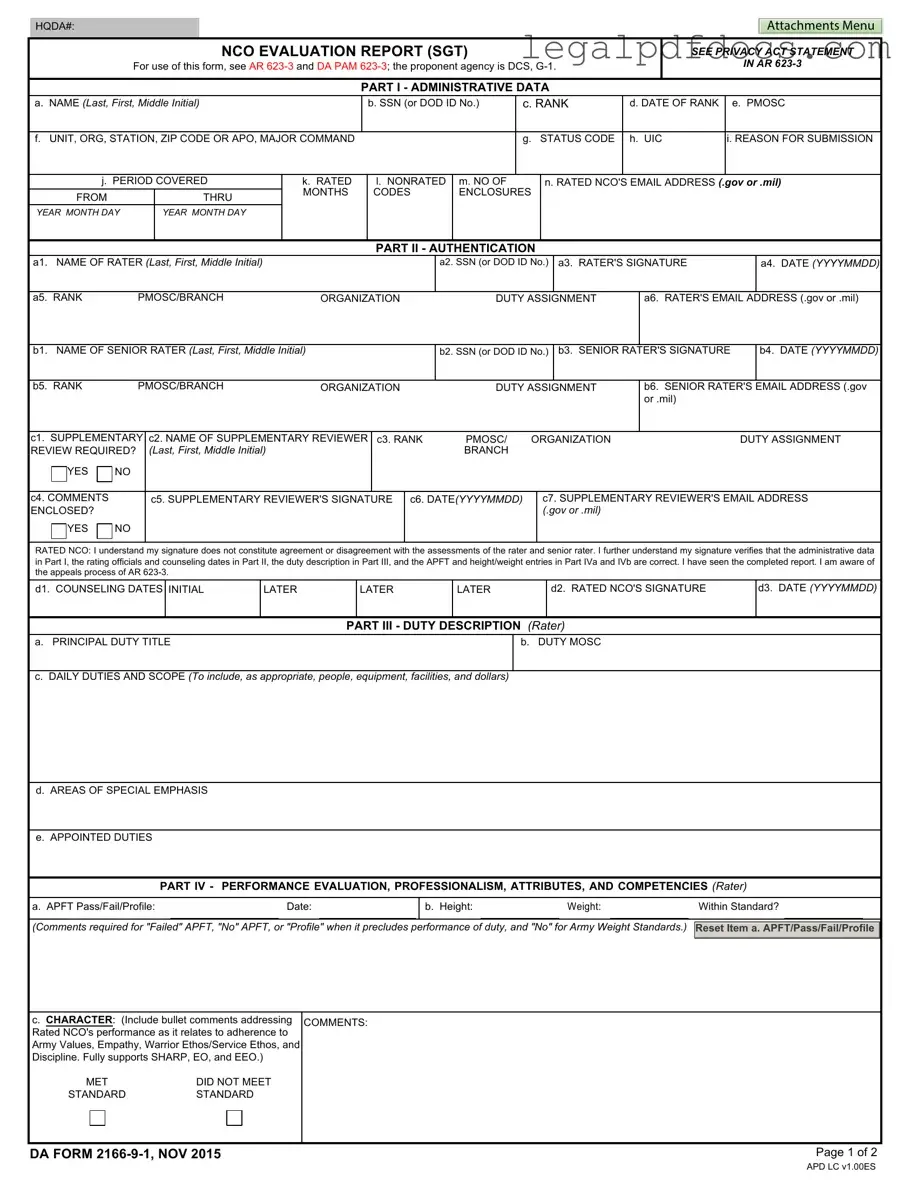The DA 2166-9-1 form serves as a critical tool for evaluating the performance of Non-Commissioned Officers (NCOs) in the United States Army. This evaluation report is designed for Sergeants and encompasses various sections that capture essential administrative data, performance metrics, and professional attributes. The form requires details such as the NCO's name, rank, unit, and the period covered by the evaluation. It also mandates input from both the rater and senior rater, ensuring that multiple perspectives contribute to the assessment. Key components include a detailed duty description, a performance evaluation that assesses character, presence, intellect, leadership, development, and achievement, and a section where the senior rater provides insights on the NCO's potential compared to peers. Additionally, the form emphasizes the importance of counseling dates and includes a verification process where the rated NCO acknowledges their understanding of the report's content and the appeals process. By providing a structured framework for evaluation, the DA 2166-9-1 form not only facilitates performance feedback but also plays a vital role in the professional development of NCOs within the Army.
